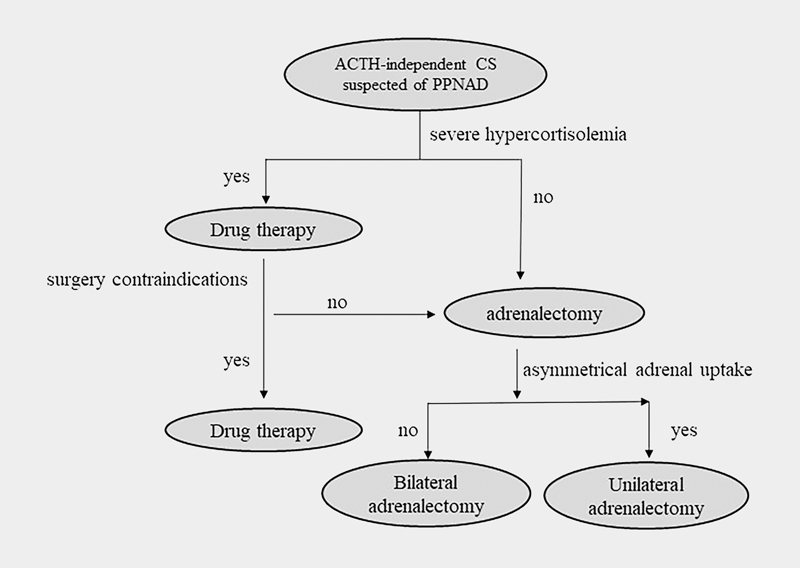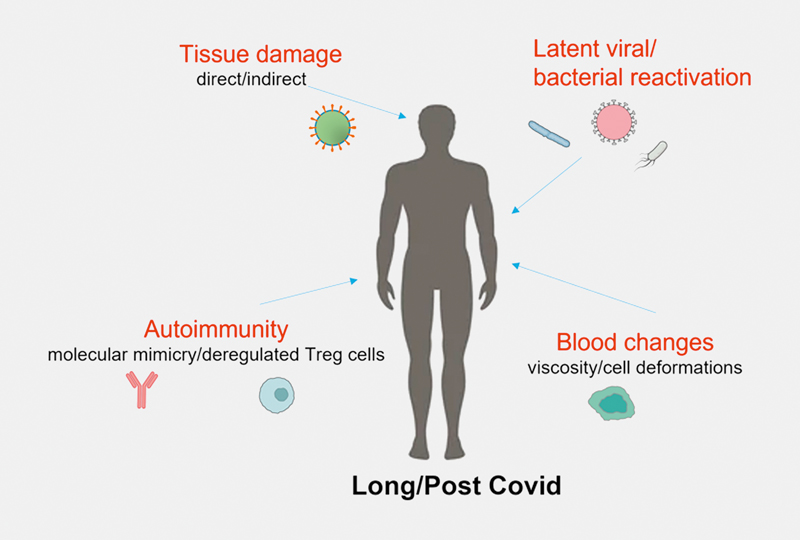
Issue 11 · Volume 54 · November 2022
Review
Treatment of Primary Pigmented Nodular Adrenocortical Disease
Xinming Liu, Siwen Zhang, Yunran Guo, Xiaokun Gang, Guixia Wang
Primary pigmented nodular adrenocortical disease (PPNAD) is a rare cause of adrenocorticotropin hormone (ACTH)-independent Cushing’s syndrome (CS), which mainly occurs in children and young adults. Treatment options with proven clinical efficacy for PPNAD include adrenalectomy (bilateral or unilateral adrenalectomy) and drug treatment to control hypercortisolemia. Previously, the main treatment of PPNAD is bilateral adrenal resection and long-term hormone replacement after surgery. In recent years, cases reports suggest that unilateral or subtotal adrenal resection can also lead to long-term remission in some patients without the need for long-term hormone replacement therapy. Medications for hypercortisolemia, such as Ketoconazole, Metyrapone and Mitotane et.al, have been reported as a preoperative transition for in some patients with severe hypercortisolism. In addition, tryptophan hydroxylase inhibitor, COX2 inhibitor Celecoxib, somatostatin and other drugs targeting the possible pathogenic mechanisms of the disease are under study, which are expected to be applied to the clinical treatment of PPNAD in the future. In this review, we summarize the recent progress on treatment of PPNAD, in which options of surgical methods, research results of drugs acting on possible pathogenic mechanisms, and the management during gestation are described in order to provide new ideas for clinical treatment.

Review
Qingju Zhou, Bin Li, Xin Tian
Rhabdomyolysis (RM) refers to the clinical syndrome caused by the release of intracellular substances into the extracellular fluid and blood circulation after rhabdomyocyte destruction due to various etiologies. In severe cases, RM can lead to life-threatening conditions such as acute kidney injury. Hypothyroidism is a rare cause of RM that can lead to missed diagnosis or misdiagnosis, and the condition worsens in the absence of timely and effective treatment. Herein, reported cases of RM caused by hypothyroidism are summarized, and clinical diagnosis and treatment recommendations are proposed to facilitate early identification and treatment of the disease.
Review
Steenblock C et al.
A continual increase in cases of Long/Post COVID constitutes a medical and socioeconomic challenge to health systems around the globe. While the true extent of this problem cannot yet be fully evaluated, recent data suggest that up to 20% of people with confirmed SARS-CoV-2 suffer from clinically relevant symptoms of Long/Post COVID several weeks to months after the acute phase. The clinical presentation is highly variable with the main symptoms being chronic fatigue, dyspnea, and cognitive symptoms. Extracorporeal apheresis has been suggested to alleviate symptoms of Post/COVID. Thus, numerous patients are currently treated with apheresis. However, at present there is no data from randomized controlled trials available to confirm the efficacy. Therefore, physicians rely on the experience of practitioners and centers performing this treatment. Here, we summarize clinical experience on extracorporeal apheresis in patients with Post/COVID from centers across Germany.

